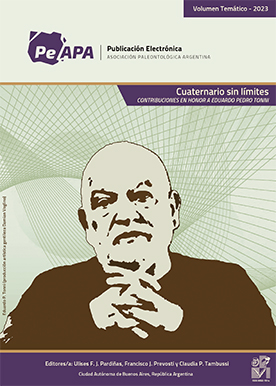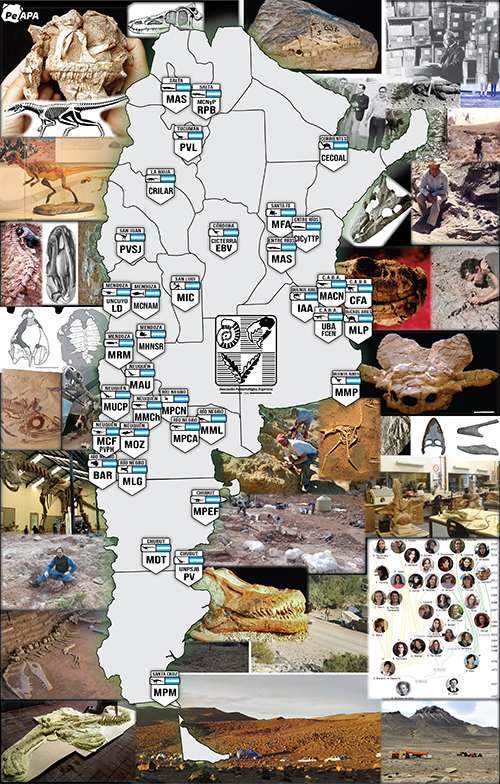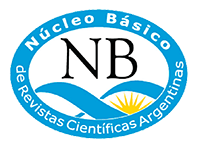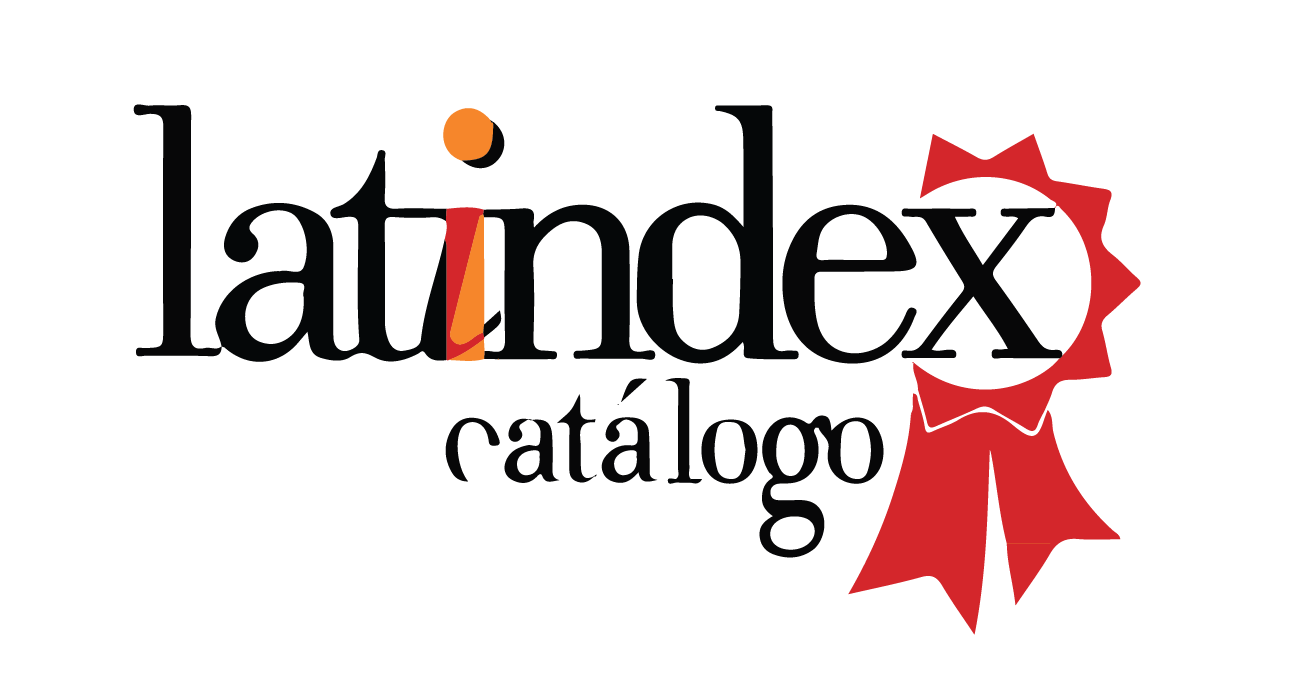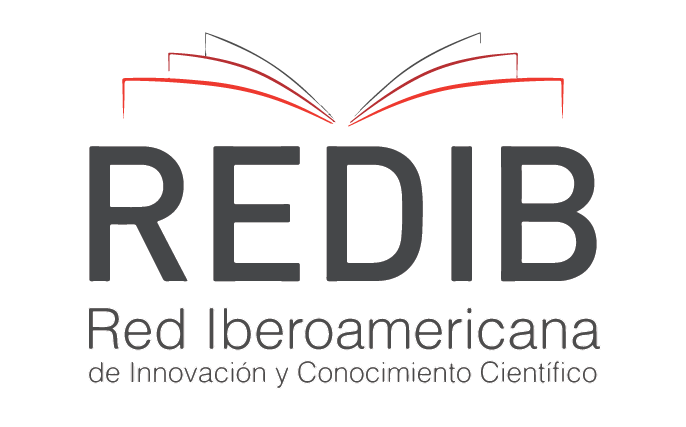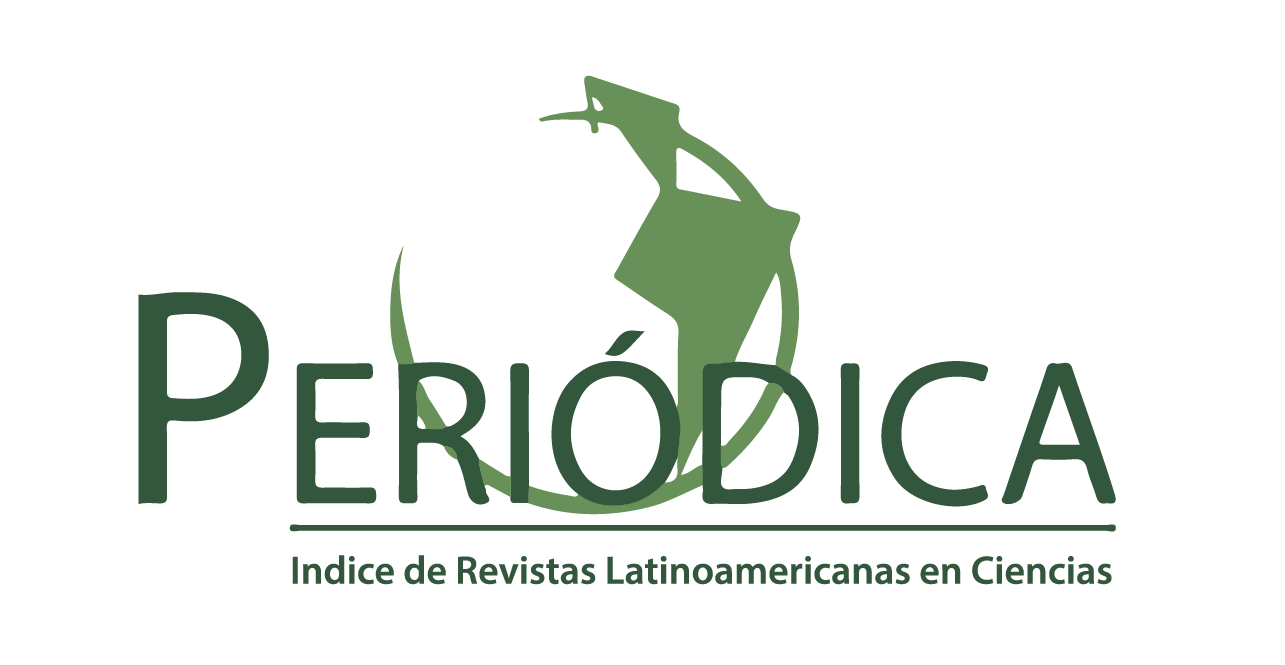FIRST RECORD OF INDALECIA (MAMMALIA, LITOPTERNA?, INDALECIIDAE) IN THE RÍO LORO FORMATION (EARLY PALEOGENE, TUCUMÁN PROVINCE, ARGENTINA)
DOI:
https://doi.org/10.5710/PEAPA.04.09.2023.459Keywords:
Río Loro Formation, Lubrera Inferior Formation, Notopterna, Biostratigraphy, Northwestern ArgentinaAbstract
The Río Loro Formation (early Paleogene, Tucumán Province, northwestern Argentina) has yielded several endemic vertebrates, including turtles, crocodiles, and mammals. The age of this unit is currently under discussion given the lack of absolute chronological data, although recent works favored a middle Paleocene–early Eocene age. In this contribution, we present a left maxillary fragment (PVL 5901), preserving part of the M1 and the M2. A first analysis indicates a close relationship with Indalecia (Litopterna?, Indaleciidae), a genus previously recorded for the Lower Lumbrera Formation (?Ypresian; Salta Province, northwestern Argentina). Given that the Indaleciidae and the representatives of Amilnedwardsidae and Notonychopidae were considered related in the context of the order Notopterna, a comparison was made between PVL 5901 and these taxa, confirming its resemblance with Indalecia. However, PVL 5901 differs from Indalecia grandensis (type and only species of the genus) by the presence of a cuspule on the base of the ectoflexus, the absence of a small fossette mesial to the distolabial fossette, and a conspicuous entoflexus. Hence, we refer PVL 5901 to Indalecia sp. This is the first common faunal element between the Río Loro and Lower Lumbrera formations. Nevertheless, the marked taxonomic discrepancies between the Río Loro vertebrate assemblage and other early Paleogene units contrast with this single common record, and a partial temporal correspondence between the Río Loro and Lower Lumbrera formations is not supported here. Instead, this record indicates a more extended temporal and geographical distribution for the genus Indalecia in northwestern Argentina.
References
Alonso-Muruaga, P. J., Babot, J., Saade, L. S., Bravo, G. G., & García-López, D. A. (2022). Aspectos paleoambientales y paleoecológicos de la fauna de vertebrados de la Formación Río Loro (Paleoceno?-Eoceno). Libro de Resúmenes de la Reunión de Comunicaciones de la Asociación Paleontológica Argentina (p.61). Salta.
Ameghino, F. (1889). Contribución al conocimiento de los mamíferos fósiles de la República Argentina. Actas de la Academia Nacional de Ciencias de Córdoba, 6, 1–1028.
Babot, M. J., García-López, D. A., Deraco, M. V., Herrera, C. M., & del Papa, C. (2017). Mamíferos paleógenos del subtrópico de Argentina: síntesis de estudios estratigráficos, cronológicos y taxonómicos. In C. M. Muruaga & P. Grosse (Eds.), Ciencias de la Tierra y Recursos Naturales del NOA. Relatorio del XX Congreso Geológico Argentino (pp. 730–753). Editores del Relatorio.
Billet, G. (2010). New observations on the skull of Pyrotherium (Pyrotheria, Mammalia) and new phylogenetic hypotheses on South American ungulates. Journal of Mammalian Evolution, 17, 21–59.
Billet, G., Muizon, C., Schellhorn, R., Ruf, I., Ladevèze, S., & Bergqvist, L. (2015). Petrosal and inner ear anatomy and allometry amongst specimens referred to Litopterna (Placentalia). Zoological Journal of the Linnean Society, 173(4), 956–987.
Bonaparte, J. & Morales, J. (1997). Un primitivo Notonychopidae (Litopterna) del Paleoceno inferior de Punta Peligro, Chubut, Argentina. Estudios Geológicos, 53, 263–274.
Bond, M. (1981). Un nuevo Oldfieldthomasiidae (Mammalia, Notoungulata) del Eoceno Inferior (Fm. Lumbrera, Grupo Salta) del NW argentino. Anais 2° Congreso Latinoamericano de Paleontología (pp. 521–536). Porto Alegre, Brazil.
Bond, M., & López, G. (1993). El primer Notohippidae (Mammalia, Notoungulata) de la Formación Lumbrera (Grupo Salta) del Noroeste argentino. Consideraciones sobre la sistemática de la familia Notohippidae. Ameghiniana, 30(1), 59–68.
Bond, M. & Vucetich, M. G. (1983). Indalecia grandenis gen. et sp. nov. del Eoceno temprano del noroeste argentino, tipo de nueva la Subfamilia de los Adianthidae (Mammalia, Litopterna). Asociación Geológica Argentina, 28(1), 107–117.
Bossi, G. E. (1969). Geología y estratigrafía del sector sur del valle de Choromoro. Acta geológica lilloana, 10, 17–64.
Bossi, G. E., Gavriloff, I. J., & Esteban, G. I. (1998). Terciario. Estratigrafía, Bioestratigrafía y Paleogeografía. In M. Gianfrancisco, M.E. Puchulu, J. Durango de Cabrera, & G. F. Aceñolaza (Eds.), Geología de Tucumán (pp. 87–108). Publicación Especial del Colegio de Graduados en Ciencias Geológicas de Tucumán.
Carbajal, E., Pascual, R., Pinedo, R., Salfity, J. A., & Vucetich, M. G. (1977). Un nuevo mamífero de la Fm. Lumbrera (Grupo Salta) de la comarca de Carahuasi (Salta, Argentina). Edad y correlaciones. Publicaciones del Museo de Ciencias Naturales de Mar del Plata “Lorenzo Scaglia”, 2, 148–163.
Castro, L. O. R., García-López, D. A., Bergqvist, L. P., & De Araújo-Júnior, H. I. (2021). A new basal Notoungulate from the Itaboraí Basin (Paleogene) of Brazil. Ameghiniana, 58(3), 272–288.
Cifelli, R. L. (1993). The phylogeny of the native South American ungulates. In F. S. Szalay, M. J. Novacek, & M. C. McKenna (Eds.), Mammal Phylogeny, Placentals, (pp. 195–216). Springer-Verlag.
del Papa, C. E., Kirschbaum, A., Powell, J. E., Brod, A., Hongn, F., & Pimentel, M. (2010). Sedimentological, geochemical and paleontological insights applied to continental omission surfaces: A new approach for reconstructing an Eocene foreland basin in NW Argentina. Journal of South American Earth Sciences, 29, 327–345.
del Papa, C., Babot, J., Dahlquist, J., García-López, D. A., Deraco, V., Herrera, C., Bertelli, S., Rougier, G. W., & Giannini, N. P. (2022). Toward a chronostratigraphy of the Paleocene-Eocene sedimentary record in northwestern Argentina. Journal of South American Earth Sciences. https://doi.org/10.1016/j.jsames.2021.103677
del Papa, C. E., Hongn, F., Powell, J. E., Payrola, P., Do Campo, M., Strecker, M. R., Petrinovic, I., Schmitt, A. K., & Pereyra, R. (2013). Middle Eocene-Oligocene broken-foreland evolution in the Andean Calchaqui Valley, NW Argentina: Insights from stratigraphic, structural and provenance studies. Basin Research, 25, 574–593.
del Papa, C., Aramayo, A., Payrola Bosio, P., Hongn, F., Montero López, C., Do Campo, M., Deraco, V., Herrera, C., Petrinovic, I., & Lapiana, A. (2017). La cuenca de antepaís Eocena–Oligocena en el NOA: primeros indicios de deformación intra-cuenca. In C. M. Muruaga, & P. Grosse (Eds.), Ciencias de la tierra y recursos naturales del NOA. Relatorio XX Congreso Geológico Argentino (pp. 237–253). Editores del Relatorio.
Deraco, V. & García-López, D. A. (2016). A new Eocene Toxodontia (Mammalia, Notoungulata) from northwestern Argentina. Journal of Vertebrate Paleontology, 36(1). https://doi.org/10.1080/02724634.2015.1037884
Fernicola, J. C., Zimicz, A. N., Chornogubsky, L., Ducea, M., Cruz, L. E., Bond, M., & Fernández, M. (2021). The Early Eocene Climatic Optimum at the Lower Section of the Lumbrera Formation (Ypresian, Salta Province, Northwestern Argentina): Origin and Early Diversification of the Cingulata. Journal of Mammalian Evolution, 28(3), 621–633.
García-López, D. A. & Babot, J. (2015). Notoungulate faunas of north-western Argentina: new findings of early-diverging forms from the Eocene Geste Formation. Journal of Systematic Palaeontology, 13(7), 557–579.
García-López, D. A. & Powell, J .E. (2011). Griphotherion peiranoi, gen. et sp. nov., a new Eocene Notoungulata (Mammalia, Meridiungulata) from Northwestern Argentina. Journal of Vertebrate Paleontology, 31(5), 1117–1130.
García-López, D.A, Saade, L.S, Babot, J., & Alonso Muruaga, P.L. (2022). Nuevos especímenes de Satshatemnus bonapartei Soria 1989 (Mammalia) permiten una reinterpretación de la especie en el marco de la fauna de la Formación Río Loro (Paleógeno, provincia de Tucumán). Libro de Resúmenes de la Reunión de Comunicaciones de la Asociación Paleontológica Argentina (p.164). Salta.
García-López, D. A., Gelfo, J. N., Scanferla, A., Babot, J., Ferro, A., & Saade, L. S. (2020). The pre-Oligocene diversity of hypsodont typotherians (Mammalia, Notoungulata) in nortwestern Argentina. Ameghiniana, 57(2), 117–131.
Gelfo, J. N. (2006). Los Didolodontidae (Mammalia: Ungulatomporpha) del Terciario Sudamericano. Sistemática, origen y evolución. [Tesis doctoral, Facultad de Ciencias Naturales y Museo, Universidad Nacional de La Plata]. Recuperado de http://sedici.unlp.edu.ar/handle/10915/4452
Gelfo, J. N., García-López, D. A., & Bergqvist, L. P. (2020). Phylogenetic relationships and palaeobiology of a new xenungulate (Mammalia: Eutheria) from the Palaeogene of Argentina. Journal of Systematic Palaeontology, 18(12), 993–1007.
Gelfo, J. N., López, G. M., & Bond, M. (2008). A new Xenungulata (Mammalia) from the Paleocene of Patagonia, Argentina. Journal of Paleontology, 82(2), 329–335.
Gelfo, J. N., López, G. M., & Lorente, M. (2016). Los ungulados arcaicos de América del Sur: “Condylarthra” y Litopterna. Contribuciones del MACN, 6, 285–291.
Herrera, C. M., Powell, J. E., Esteban, G., & del Papa, C. E. (2016). A new Eocene dasypodid with caniniforms (Mammalia, Xenarthra, Cingulata) from Northwest Argentina. Journal of Mammalian Evolution, 24, 275–288
Hershkovitz, P. (1971). Basic crown patterns and cusp homologies of mammalian teeth. In A. A. Dahlberg (ed.), Dental Morphology and Evolution (pp. 95–150). University of Chicago Press.
Kramarz, A. G., Bond, M., & Rougier, G. W. (2017). Re-description of the auditory region of the putative basal astrapothere (Mammalia) Eoastrapostylops riolorense. Systematic and phylogenetic considerations. Annals of Carnegie Museum, 84, 99–167.
McGrath, A. J., Flynn, J. J., & Wyss, A. R. (2020). Proterotheriids and macraucheniids (Litopterna: Mammalia) from the Pampa Castillo Fauna, Chile (early Miocene, Santacrucian SALMA) and a new phylogeny of Proterotheriidae. Journal of Systematic Palaeontology, 18(9), 717–738.
Ortiz-Jaureguizar, E. (1996). Paleobiogeografía y paleoecología de los mamíferos continentales de América del Sur durante el Cretácico tardío-Paleoceno: una revisión. Estudios Geológicos, 52, 83–94.
Pascual, R. & Ortiz-Jaureguizar, E. (2007). The Gondwanan and South American Episodes: Two Major and Unrelated Moments in the History of the South American Mammals. Journal of Mammalian Evolution, 14, 75–137.
Pol, D. & Powell, J. E. (2011). A new sebecid mesoeucrocodylian from the Río Loro Formation (Palaeocene) of north-western Argentina. Zoological Journal of the Linnean Society, 163, 7–36.
Powell, J. E. (2006). Un nuevo mamífero Indaleciinae (Litopterna, Adiantidae) de la Formación Río Loro, provincia de Tucumán, Argentina. Ameghiniana, Suplemento Resúmenes, 43(4), 53R.
Powell, J. E. & Ortiz, P. E. (2014). Los vertebrados fósiles de la provincia de Tucumán. In S. Moyano, M. E. Puchulu, D. S. Fernández, S. Nieva, & G. Aceñolaza (Eds.), Geología de Tucumán, (pp. 208–227). Colegio de Graduados en Ciencias Geológicas de Tucumán.
Powell, J. E. & Palma, R. M. (1981). Primer hallazgo de mamíferos en la Formación Río Loro, Provincia de Tucumán y su significado cronológico. Revista de la Asociación Geológica Argentina, 26, 208–212.
Powell, J. E., Babot, M. J., García López, D. A., Deraco, M. V., & Herrera, C. M. (2011). Eocene vertebrates of northwestern Argentina: annotated list. In J. A. Salfity & R. A. Marquillas (Eds.), Cenozoic Geology of the Central Andes of Argentina (pp. 349–370). SCS Publisher.
Simpson, G. G. & Minoprio, J. L. (1949). A new adianthine litoptern and associated mammals from a Deseadan faunule in Mendoza, Argentina. American Museum Novitates, 1434, 1–27.
Smith, J. B. & Dodson, P. (2003). A proposal for a standard terminology of anatomical notation and orientation in fossil vertebrate dentitions. Journal of Vertebrate Paleontology, 23(1), 1–12.
Soria, M. F. (1984). Notopterna: un nuevo orden de mamíferos ungulados del Terciario inferior de Sudamérica. Resúmenes I Jornadas Argentinas de Paleontología de Vertebrados (p. 23). La Plata.
Soria, M. F. (1987). Estudios sobre los Astrapotheria (Mammalia) del Paleoceno y Eoceno. Parte I: descripción de Eoastrapostylops riolorense Soria y Powell 1982. Ameghiniana, 24(1-2), 21–34.
Soria, M. F. (1988). Estudios sobre los Astrapotheria (Mammalia) del Paleoceno y Eoceno. Parte II: filogenia, origen y relaciones. Ameghiniana, 25(1), 47–59.
Soria, M. F. (1989a). Notopterna: un nuevo orden de mamíferos ungulados eógenos de América del Sur. Parte I. Los Amilnedwardsidae. Ameghiniana, 25(3), 245–258.
Soria, M. F. (1989b). Notopterna: un nuevo orden de mamíferos ungulados eógenos de América del Sur. Parte II: Notonychops powelli gen. et sp. nov. (Notonychopidae nov.) de la Formación Río Loro (Paleoceno medio), provincia de Tucumán, Argentina. Ameghiniana, 25(3), 259–272.
Soria, M. F. (1989c). El primer Notoungulata de la Formación Río Loro (Paleoceno medio), provincia de Tucumán, República Argentina. Ameghiniana, 26(3-4), 145–151.
Soria, M. F. & Powell, J. E. (1981). Un primitivo Astrapotheria (Mammalia) y edad de la Formación Río Loro, provincia de Tucumán, República Argentina. Ameghiniana, 18(3-4), 155–168.
Vucetich, M. G. (1980). Un nuevo Notostylopidae (Mammalia, Notoungulata) proveniente de la Formación Lumbrera (Grupo Salta) del noroeste argentino. Ameghiniana, 17(4), 363–372.
Vucetich, M. G. & Bond, M. (1982). Los primeros Isotemnidae (Mammalia, Notoungulata) registrados en la Formación Lumbrera (Grupo Salta), del Noroeste Argentino. Ameghiniana, 19(1-2), 7–18.
Vucetich, M. G., Reguero, M. A., Bond, M., Candela, A., Carlini, A. A., Deschamps, C. M., Gelfo, J. N., Goin, F. J., López, G. M., Ortiz Jaureguizar, E., Pascual, R., Scillato-Yané, G. J., & Vieytes, E. C. (2007). Mamíferos continentales del paleógeno argentino: las investigaciones de los últimos cincuenta años. Asociación Paleontológica Argentina. Publicación Especial, 11, 239–255.
Woodburne, M. O., Goin, F. J., Bond, M., Carlini, A. A., Gelfo, J. N., López, G. M., Iglesias, A., & Zimicz, A. N. (2014). Paleogene land mammal faunas of South America; a response to global climatic changes and indigenous floral diversity. Journal of Mammalian Evolution, 21(1), 1–73.
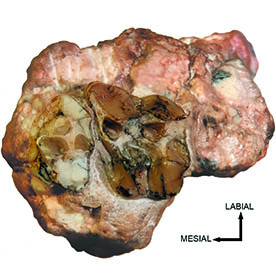
Additional Files
Published
Issue
Section
License
Copyright (c) 2023 Luis Sebastián Saade, Daniel Alfredo García-López, María Judith Babot, Pablo Joaquín Alonso-Muruaga, Guido Ezequiel Alonso

This work is licensed under a Creative Commons Attribution-NoDerivatives 4.0 International License.

Authors retain copyright and grant the journal right of first publication with the work simultaneously licensed under a CC Attribution-NonCommercial 4.0 that allows others to share the work with an acknowledgement of the work's authorship and initial publication in this journal.





